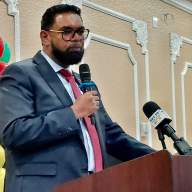ernance and corruption – which critics of increasing country ownership point to as a potential flaw of the reforms.
Oxfam, an advocate of increasing country ownership, points out that the reforms would not simply give sums of money over to poor country governments but give those governments more of a say in what the aid money goes to and how it is provided.
Adams wonders whether U.S. policymakers will see the first corruption scandal that is uncovered as a success or a failure. “Countries cannot develop if they’re not uncovering corruption – that’s part of the development process,” he says.
Toward that end, and toward ensuring U.S. aid is effective, USAID has been developing a tool in Liberia to assess country systems, according to O’Neill.
Some of the reforms are underway already, while others will be soon and still others will need some approval from the U.S. Congress.
O’Neill says that already there are six projects working to build local capacity on the ground – in Egypt, Kenya, Peru, the Philippines, South Africa and Thailand.
She says that the reform targets associated with IPR are expected to not only increase in future years but also have a broader impact on USAID’s work as the agency “learns better, quicker ways to arrive at development outcomes”.
In that sense, she says, IPR is a “base initiative” for broader efforts.
Oxfam’s Adams also expects the concrete targets to grow over time, though he says they do go far enough for now. (IPS/GIN)















